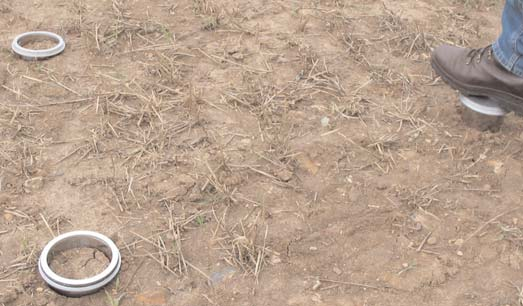Field soil respiration measurements.
Soil respiration or soil CO2 flux can be defined as the
net CO2 production from soil, primarily as a result of soil microbial biomass decomposition.
Soil flux is the largest natural source of atmospheric
The chamber is specifically designed for short-term measurements. Great care has been taken in the design to ensure that no unwanted influences affect the soil flux data.

Minimised pressure gradients: Pressure variations in some chamber designs can lead to an artificial
CO2 and therefore there is a growing interest in its
activity across a range of environmental research
suppressing or enhancing of CO2
flux from the soil. The disciplines.

High quality soil chamber design
ADC BioScientific Ltd. has developed a new high quality soil respiration chamber for use with the ADC LCi and LCpro+ portable photosynthesis systems.
The chamber comprises a lower stainless steel collar and a detachable upper compartment which connects directly to the chamber handle of an LCi or LCpro+ system. Differential CO2 flux measurements are made by the highly accurate, miniaturised CO2 IRGA, located
directly adjacent to the soil chamber in the handle of the
LCi and LCpro+ systems.
The collar is inserted into the soil prior to measurements being made ensuring optimal positioning of the
chamber, regardless of soil condition or type. A collar insertion tool is provided to aid this placement.
incorporation of a novel pressure release valve ensures
that there is no difference between the chamber head space pressure and the outside ambient atmospheric pressure.
The chamber is also insensitive to wind. There is no change in measured data when air flows over the chamber at varying speeds and in different directions.
A soil temperature sensor is supplied as standard with each chamber. The LCi or LCpro+ PAR sensor can be mounted on the top of the soil chamber.
Spatial distribution studies
The availability of additional soil collars allows researchers to perform multiple soil flux measurements on a large field site. Each collar being used to define a separate analysis area.
These stainless steel collars can be left in the soil enabling long-term comparative studies to be performed. Alternatively adapters are available allowing researchers to use standard size soil waste pipes as multiple collars.
 5510713001
5510713001
 5510713001
5510713001






